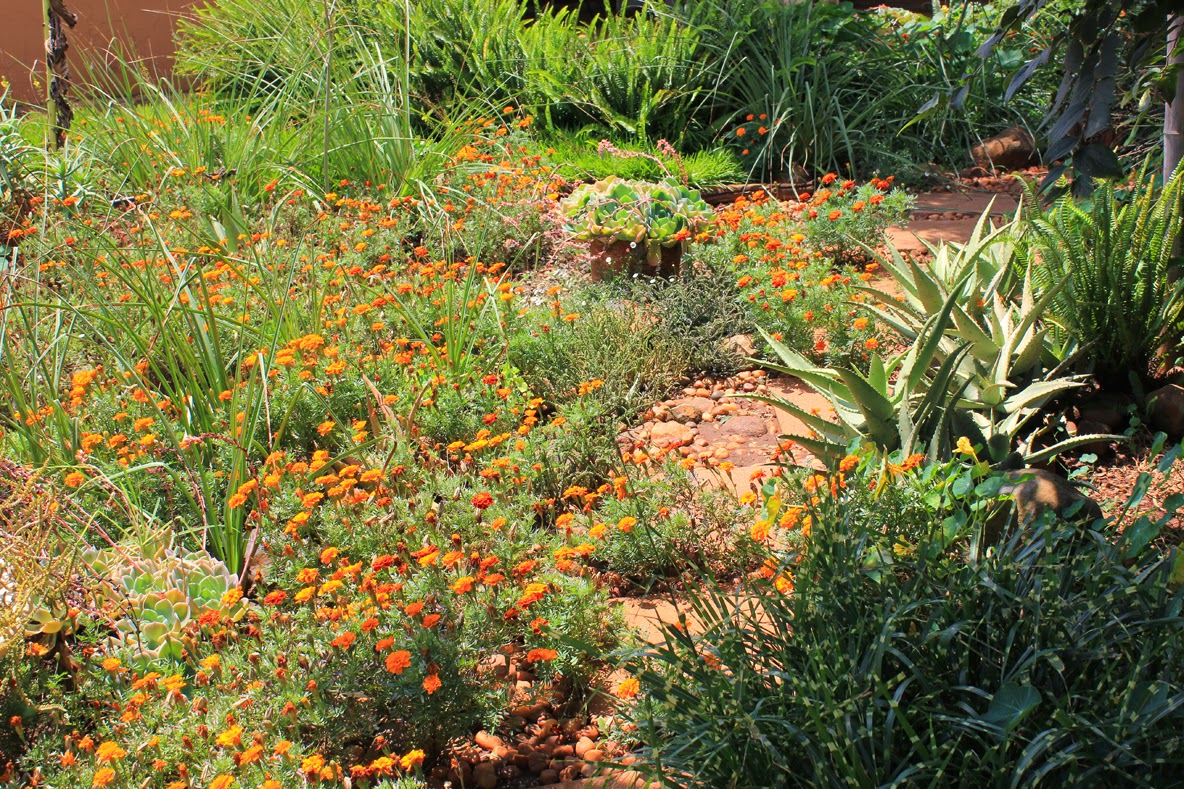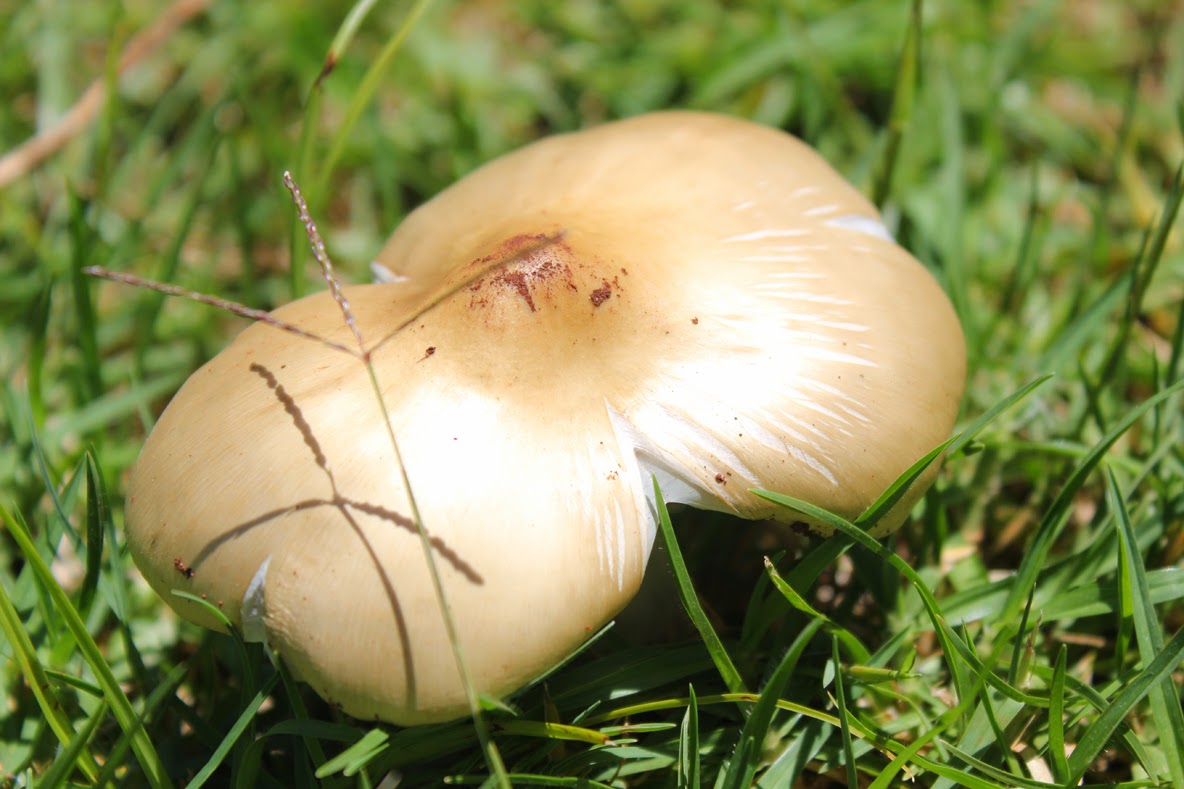🍄 It is utterly forbidden to be half-hearted about gardening. You have got to love your garden whether you like it or not.
It is utterly forbidden to be half-hearted about gardening. You have got to love your garden whether you like it or not. - W.C. Sellar
🍄
The bliss of gardening on my little piece of African soil. A year-by-year record of the progress in my old garden. My "new" garden of 2000sq.m. started in 2004, and ended when we sold our smallholding in 2017 and moved to the Dolphin Coast in KwaZulu Natal. Now "my garden" consists of a postage-stamp-size mostly-indigenous succulent garden and it always amazes me how supposedly drought-resistant plants do so well in this tropical coastal region.

Monday, 30 March 2015
Monday - what a day!
I had quite an impressive "to do" list for today and was able to mark off quite a few off; do the filing, buy some compost, paint a little slatted table white, sort out my walk-in dressing room, clean and pack all the kitchen utensils and cutlery, replant some sword ferns and taking pics for this post. What a day and a great start to this week, it feels like Wednesday already and it's only Monday!
March is when the first sign of autumn arrives in the garden. Leaves start falling and your garden starts readying itself in anticipation of the colder months. My Tree Fuchsia (Halleria lucida) has already lost almost all her leaves, a sure sign for me that we're going to have a cold winter.
A little extra help and encouragement such as a layer of mulch and fertiliser will not go amiss and is a perfect way to prepare your garden for the cold that will shortly follow. Just hope the frost is not going to be as severe as last winter...
Indigenous plants are always in fashion because they save water, grow well in our environment, are fast growing and colourful, especially the Aloes, which should be flowering shortly, providing bursts of colour during the cold months. These are just a few indigenous plants that you can get from your local garden centre:
Vygies (Lampranthus)
Various Aloes, in particular Aloe ferox and Aloe marlothii
Agapanthus
Agathosma ovata 'Kluitjieskraal
Babiana hirsuta
Buddleja auriculata
Carpobrotus quadrifidus
Celtis africana
Chlorophytum comosum
Dioscorea elephantipes
Ekebergia capensis
Elegia equisetacea
Encephalartos transvenosus
Faucaria tigrina
Felicia amelloides
Gasteria armstrongii
Gazania krebsiana
Hermannia
Juncus kraussii
Kalanchoe thyrsiflora
Kiggelaria africana
Melinis nerviglumis
Mentha longifolia
Nymphaea nouchali var. caerulea
Olea europaea subsp.africana
Olinia ventosa
Pachypodium namaquanum
Pelargonium inquinans
Podocarpus henkelii
Portulacaria afra
Restio festuciformis
Rhus lancea = Searsia lancea
Rhus pendulina = Searsia pendulina
Scabiosa africana
Sorghum bicolor
Syzygium cordatum
Thamnochortus insignis
Tricholaena monachne
Urochloa mosambicensis
Viscum crassulae
Welwitschia mirabilis
Ximenia caffra
Zantedeschia aethiopica
Hope your Monday was just as good as mine!
.
Sunday, 29 March 2015
Blooming in my garden - February/March
Tiny Erigeron fills the sunny spots with splashes of white. Hailing from Mexico, these perennials with small daisy-like flowers flower over a long period in summer
Lots of rain, and insects enjoying a refreshing drink
The Marigolds put up a grand show this year
Bulbine frutescens almost at the end of their flowering season
A Hoverfly enjoys some nectar
In the middle of March, the plump Hydrangeas started waning
Lots of rain always produces these lovely toadstools all over my lawn
The middle of March and the Nasturtiums were still going strongly
Salvia still clinging to its flowers
Syzygium cordatum (pronounced si-zig-ee-um) is
home to many birds and insects and produces these lovely berries at the end of summer
Other names : Waterbessie, umdoni, water berry
Weeping Anthirucum (Chlorophytum saundersaie)
Summer memories - Autumn is well under way and soon the cold will be with us.
::
Labels:
autumn,
blooming in my garden,
february 2015,
march 2015
Friday, 27 March 2015
Cleaning the wildlife pond
Every Autumn and Spring is pond cleaning time. As soon as the frogs have stopped singing at night and just before the water gets too cold, we empty it out, scrub and re-arrange and fill up again. Same procedure in Spring, just before the frogs surface again from their hibernation.
With all the rain we've had, accompanied by hot temperatures, the pond is a haven for algae and mosquito larvae, which I'm sure the frogs enjoy!
The first thing to do is to pump out all the water (my garden thrills at that!) as low as possible. The suction pipe is at the lowest point of the pond and when it starts sucking thick sludge, it's time to remove all the thick sludge by hand with buckets.
Solly emptying the sludge while Chrissie sweeps the sides clean
Much of the wildlife in the pond flees to the bottom of the sludge and lands up on the lawn as the pond is emptied. I stand by to save any tadpoles, water beetles, water scorpions and anything else I might find in the sludge, with the chickens revelling in anything I might have missed! I used to try and squirt the sludge away with a hose pipe, but Chrissie "instructed" me to let it dry and then it's easy for her to rake up. You live and learn every day!
With the job almost finished, Solly poses for the camera.
Time to fill the pond with lovely fresh water. I also return all the insects I rescued from the sludge (and had in a bucket of water) to the pond to settle down before I switch on the pump again.
At the same time, the plants at the edge of the pond are trimmed and cleaned up
The finished product. Now, should I get some ducks...?
.
Labels:
cleaning the wildlife pond,
garden,
pond,
wildlife pond
Subscribe to:
Comments (Atom)







NaNaBe124923.jpg)






























